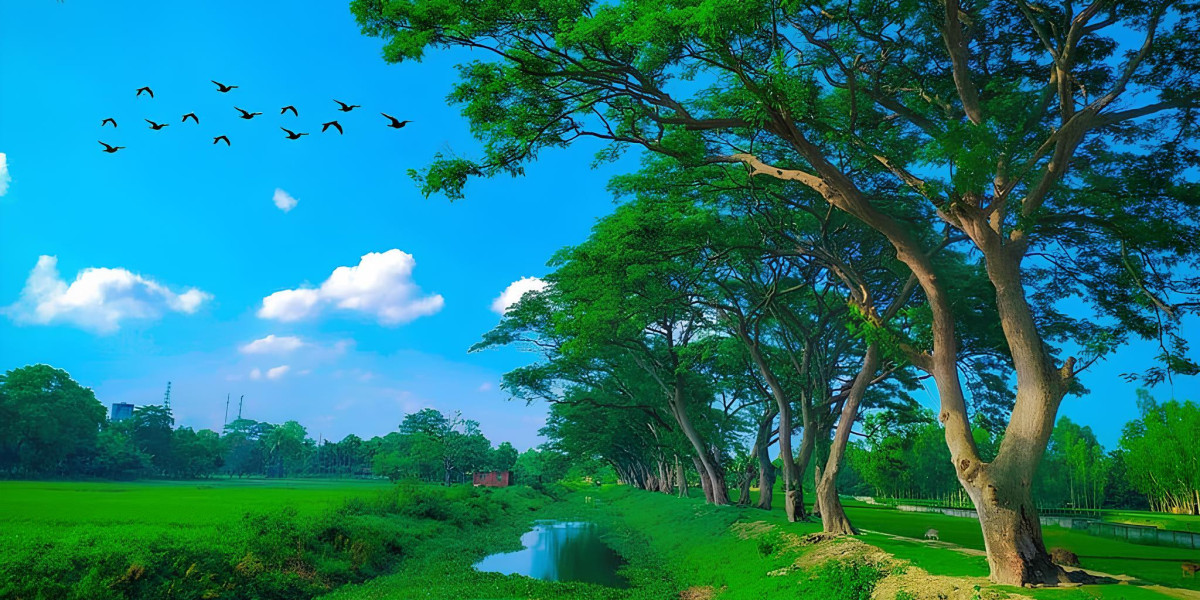Bangladesh, which is in South Asia, is a place where history can be seen in its ancient mosques, temples, and colonial buildings. The country’s unique cultural heritage is mixed with its long history and beautiful surroundings. Between the periods of the Mauryas and Guptas, the Bengal Sultanate, and British colonialism, the region welcomed many different civilizations. The country’s unique buildings, historical places, and traditions are the result of this interesting mix of history.
Anyone planning to visit Bangladesh to see this history should obtain a Bangladesh Visa as the first requirement. Now that there is better connection and friendlier diplomacy between the countries, applying for a Bangladesh Visa in India is much easier. If you love history, architecture, or just want to experience the cultural side of South Asia, Bangladesh will give you an unforgettable trip through the past. Paharpur’s remains and Lalbagh Fort show the strength, creativity, and progress of Bangladesh.
Here are some of the Discover the Rich Heritage of Bangladesh: History & Landmarks
1. Mahasthangarh is known as the earliest urban archaeological site.
Archaeologists believe that Mahasthangarh, in Bogura, is one of the oldest sites in Bangladesh, built at least in the 3rd century BCE. In the past, this city was the capital of the Pundra Kingdom. There are remains of palaces, monasteries, and temples, which demonstrate that the city’s planning was advanced for its time. If you like history, Mahasthangarh is the place to see to get a glimpse of the region’s early civilization.
2. Paharpur is the ancient Buddhist monastery called Somapura Mahavihara.
Somapura Mahavihara in Paharpur is considered important because it is a UNESCO World Heritage Site and one of the biggest Buddhist monasteries in the Indian subcontinent. In the 8th century, the Pala dynasty constructed this archaeological site, which has beautiful terracotta art and a big central shrine. Visitors of all kinds are attracted to this historic site because of its cultural and religious meaning.
3. Lalbagh Fort: Showing the Mughal’s Legacy in Dhaka
In the 17th century, Prince Muhammad Azam built Lalbagh Fort, which now represents the greatness of the Mughal Empire. Located right in Dhaka, the unfinished fort has the tomb of Pari Bibi, the royal audience hall, and the Lalbagh mosque. Mughal architecture and beautiful gardens make this place popular among those who wish to know about Bangladesh’s imperial past.
4. The Pink Palace of Nawabs is known as Ahsan Manzil.
Called the Pink Palace, Ahsan Manzil was the main residence of the Nawabs of Dhaka. On the banks of the Buriganga River, Ahsan Manzil now operates as a museum and reveals how Dhaka’s elite lived during the British rule. A blend of European and Mughal styles makes the building a beautiful site that attracts many tourists annually.
5. Mainamati Ruins: Finding a Buddhist Civilization from the Past
Near Comilla, the Mainamati archaeological site has over 50 Buddhist relics, for example, stupas, monasteries, and shrines from the 7th to 12th centuries. The most well-known place in this area is Shalban Vihara, where Buddhist teaching took place. The museum at the site contains a huge collection of artifacts, sculptures, and coins that show the Buddhist background of southeastern Bangladesh.
6. Panam City: An Example of Colonial and Mughal Style
Near Dhaka, Panam City in Sonargaon is a place with old buildings that were built during the Mughal and British colonial times. Exploring the small streets with abandoned grand houses makes visitors imagine what life was like for rich merchants in the past. Although much of Panam City is in ruins, it still gives us a clear picture of the former blend of business, art, and architecture.
7. Sixty Dome Mosque is the Spiritual Icon of Bagerhat
The Sixty Dome Mosque (Shat Gombuj Masjid) in Bagerhat is another UNESCO World Heritage Site from the 15th century by Turkish general Ulugh Khan Jahan. The name of the mosque means 60 domes, but it actually contains 77 low domes on top of many stone pillars. Because of its large prayer hall, beautiful terracotta carvings, and peaceful surroundings, it is considered one of Bangladesh’s finest examples of early Islamic architecture.
8. Kantaji Temple is a perfect example of terracotta art.
In Dinajpur, Kantaji Temple shows the remarkable late medieval Hindu architecture of Bengal. The temple was built in the 18th century and is decorated with thousands of terracotta tiles showing pictures of Hindu myths, normal life, and nature. After the earthquake, the temple is still impressive to visitors with its beautiful and meaningful carvings.
9. Liberation War Museum pays tribute to the fight for India’s freedom.
A trip to the Liberation War Museum in Dhaka is necessary to learn about Bangladesh’s recent history. The museum pays tribute to the country’s fight for independence from Pakistan in 1971. With photographs, documents, stories, and war artifacts, the museum tells us about the hardships and strength of the Bangladeshi people. You will learn and feel moved, and it is great for anyone curious about modern history.
10. Dhakeshwari Temple is the key temple in Dhaka that connects people with their religion.
The Dhakeshwari Temple, a place devoted to the Hindu goddess Dhakeshwari, is the main temple of Bangladesh and one of its earliest religious sites. The temple is thought to have started in the 12th century and has been updated several times, yet it is still a place of worship. It represents peace among religions in the country and attracts both people interested in religion and those interested in history.
Conclusion
Bangladesh is not only a country, but also a place full of ancient history, old royal dynasties, harmony among religions, and strength. Prehistoric cities, the splendid Mughal buildings, and colonial buildings all tell their own special stories. Those who like to explore history will enjoy how Bangladesh’s culture shows its heritage. No matter if you visit the peaceful temples, lively forts, or eerie ruins, you will learn about how South Asia developed and what the Bengali identity is all about.
Getting a Bangladesh Visa from India is now easy for Indian tourists who want to visit the country. If you plan your trip and keep records, you can learn and appreciate new places at the same time. From the exciting capital in Dhaka to the peaceful Paharpur, Bangladesh welcomes those who appreciate its history. If you’re interested in discovering Bangladesh’s rich heritage, use the opportunity to get your Bangladesh Visa and discover its interesting story.













